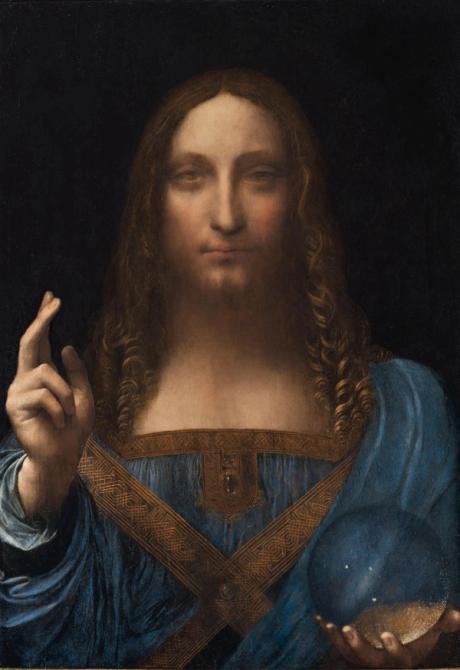
As the civil fraud trial brought against Sotheby’s by the Russian billionaire Dmitry Rybolovlev lurches toward its conclusion—possibly as soon as next week—a clear tension has emerged in Judge Jesse Furman’s Manhattan courtroom: despite what was framed in the art world as “the trial of the century”, the substance of the proceedings has mostly come down to lawyers haggling over the minutiae of email correspondence and corporate bureaucracy.In fairness, this was always the most likely path for the dispute to travel. Roughly 30 years of John Grisham novels and Aaron Sorkin screenplays have conditioned the public to expect any high-stakes trial to deliver a consistent stream of theatrical dialogue, bombshell evidence and stunning reversals. Instead, actual white-collar civil cases tend to see the mundane overrule the melodramatic. Even the cases that eventually reveal outrageous wrongdoing usually have to get there by slogging through reams of evidence and weeks of testimony that only look damning to a jury in the aggregate.Although these first three weeks of Rybolovlev’s clash with Sotheby’s suggest some of the auction house’s processes certainly could have been more rigorous in the four high-value private sales at issue, they also seem to indicate that, by the 2010s, the house had professionalised enough to avoid the kind of blatant self-dealing being alleged. And the strongest argument in Sotheby’s favour is that the behind-the-scenes story the evidence tells about its business so far is ultimately so boring—just as it should be for a reasonably mature business.Glamour goneThe captivating glimpses of drama, glamour and power have mostly vanished since Rybolovlev himself stepped down from the witness stand on 12 January. Replacing them, for the most part, have been dozens of hours of testimony parsing the semantics of messages and documents written by current and former Sotheby’s staff.Much of the testimony delivered in weeks two and three came from Samuel Valette, the Impressionist and Modern specialist who acted as Sotheby’s main conduit to Yves Bouvier, the Swiss dealer Rybolovlev had accused of price-gouging him to the tune of more than $1bn; Alexander Bell, the co-chair of Sotheby’s Old Master paintings department; Bruno Vinciguerra, house’s former chief operating officer; and Franka Haiderer, Sotheby’s chair of valuations for Europe during the period in question. But in their campaign to expose incriminating gaps in the auction house’s compliance architecture, Rybolovlev’s lawyers mostly had to try to convince the jury that subtle weaknesses were nefarious structural failures.In the case of the Salvator Mundi, for instance: When a Sotheby’s higher-up emailed Bell about the “adviser” who would be visiting the house for a private viewing of the painting in 2013, did he understand that to mean Bouvier or his sometimes-intermediary Jean-Marc Peretti—and why was his answer now different than his answer in an earlier deposition? Was a 2015 Sotheby’s appraisal of the painting’s insurance value sent as a “letter” without the house’s legalistic “conditions of valuation” attached, or as a formal certificate? Who at Sotheby’s gets to decide which currency denominates an appraisal, and how typical is it for a client to be allowed to review a draft of the appraisal once that decision has been made?Keep in mind that getting to these types of questions requires literal hours of court-formalised back-and-forth between lawyers and witnesses to establish the absolute basics of the evidence: Do you see the date on this email reproduced onscreen for the jury? Do you recognise this attachment? Remind us again who this person copied on the email was? (The answer has almost invariably been, “My assistant at the time”. Never forget that assistants make the art world go ’round.)It is still a matter of debate whether the proceedings have sufficiently shifted opinions on whether Sotheby’s involvement with Bouvier amounted to fraud. But they have definitively proven that one of the only things less interesting than hearing about a stranger’s dream is hearing about a stranger’s inbox.New witnesses, same questionsAnother reason the trial has devolved into such a grind is that so much of the testimony has offered so little new information. In many instances, the same fine distinctions about Sotheby’s practices have been litigated through the testimony of three or more people with only slightly different perspectives on the events and communications in question.Even Judge Furman has voiced his frustrations with this aspect of the case. At the end of proceedings this Tuesday (23 January), he told both sets of lawyers that “if you’re detecting increasing impatience on my part, you’re not wrong. It is one thing to have one witness corroborate the testimony of another on an issue that is actually in dispute. But it strikes me… that we’re really going over things that are not disputed in this case, and the jury has gotten at this point.”This is a bigger problem for Rybolovlev’s lawyers than Sotheby’s. Obviously, the former haven’t been hired to entertain journalists in the courtroom. They were, however, hired to convince the 12 art world outsiders making up the jury that how Sotheby’s conducted business surrounding the Salvator Mundi and three other high-value works was so deceptive and self-serving that Rybolovlev, a billionaire, deserves compensation that would constitute a large fortune to the vast majority of people now living on earth. (His side is petitioning the court for at least $190m in damages.) The tedium and repetition leave me sceptical that much of what has been litigated so far is moving the jurors’ hearts and minds to his side.It wouldn’t surprise me in the least if some, or even all, members of the jury come away from this trial believing that certain aspects of Sotheby’s private sales, appraisals or communications procedures were surprisingly sloppy, loose or confusing for a multibillion-dollar business. But deciding that the house’s procedures left room for improvement is fundamentally different from deciding that the lack of rigour equates to material assistance in fraud.The jury’s roleIt doesn’t help Rybolovlev that, in these later stages of the trial, the most memorable testimony for his side concerned Bouvier, not Sotheby’s. One of the only witnesses this week not to have worked at the auction house was Sandy Heller, the powerful New York-based art adviser whose December 2014 meeting with Rybolovlev proved critical in convincing the Russian that Bouvier had been cheating him. Heller’s testimony included saying that he told Rybolovlev that it sounded “like [he was] being controlled” by Bouvier and “paying way above the market” for the works he had acquired.These statements—along with when Heller recounted that he replied to Rybolovlev’s contention that Bouvier was “the most important man in the art world” by saying he’d “never heard of the man”—may have had more direct power than, say, the dissection of Sotheby’s appraisal process. But how exactly it helped prove the fault lay with the auction house was no clearer afterward. (Bouvier has never been found guilty of any crime anywhere; he and Rybolovlev settled all of their legal disputes in all jurisdictions in December 2023.)That said, a flawless case isn’t necessary for success. Unlike in US criminal trials, the lawyers in a stateside civil trial do not have to prove the defendant’s guilt “beyond a reasonable doubt”. Instead, the jury is instructed to form its verdict based on “a preponderance of the evidence”. In plain English: to win, Rybolovlev’s lawyers don’t have to convince the jury that Sotheby’s conduct was unquestionably fraudulent, only that it was more fraudulent than not.Although satisfying this lesser burden of proof is easier to do in theory, their apparent choice (if not need) to do so by laboriously sifting through the details of Sotheby’s imperfect but real bureaucracy probably means it’s out of reach. The uppermost echelon of the private art market still often hinges on informal arrangements, but the minutiae that follows has become more and more overwhelming with time. Rather than the devil being in the details, the drudgery could very well be Sotheby’s salvation.


























